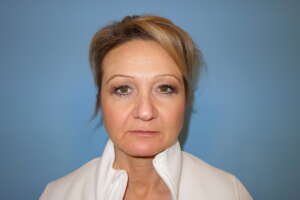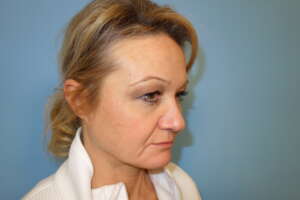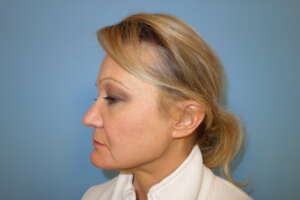Face-lift surgery helps eliminate wrinkles and sagging skin that results from age, sun exposure and the use of facial gestures. This procedure is often coupled with other facial surgeries to improve appearance, such as chin augmentation and/or eyelid surgery. Good candidates for face lifts are in good health, have skin that retains some measure of elasticity, and are not planning to lose any substantial amounts of weight after the surgery.
Procedure
Face lifts are most frequently performed on an outpatient basis using local anesthesia with sedation. The surgeon makes incisions that create an outline of the face: across the hairline, behind both temples, in front of each ear, around the earlobes, behind the ears, and ending at the scalp on both sides of the head. The skin is gently removed from the underlying tissue and excess skin is removed. If needed, fat deposits beneath the neck and chin may be removed using liposuction. The surgeon tightens loose muscles and soft tissue around the face and closes the incisions with small sutures. The surgery generally takes about 5 hours.
Recovery
Following the surgery, the head is tightly bandaged to reduce swelling. Stitches are removed in 5 to 6 days and a support dressing is applied for the next 1 to 2 weeks. Swelling, bruising and numbness are normal and will subside over time. It is important to sleep with the head elevated during the recovery period. As healing begins, patients may encounter some temporary discoloration of the skin as well as temporary hair loss around incisions. Sometimes a facial nerve is bruised during the procedure, which may cause the temporary loss of function or sensation. However, this side effect is rarely permanent. Healing is gradual after a face lift. Patients must avoid bending and heavy lifting for the first 2 to 3 weeks after surgery. It takes a full 6 months until all the benefits of the surgery can be seen.
BEFORE



AFTER



BEFORE



AFTER





